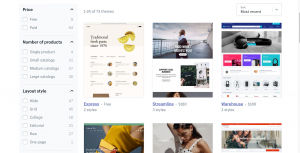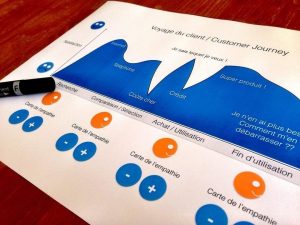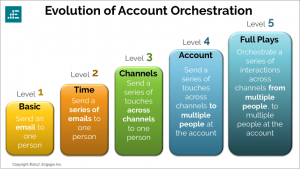— July 19, 2019
Do you want to keep your Google CPCs low while still reaping big rewards – heaps of converting traffic? Of course you do!
That’s the ultimate eCommerce traffic goal, isn’t it? Finding those unicorn Google campaigns that bring highly-targeted traffic packed with high-intent buyers for the least amount of spending possible.
We may all be aiming towards these unicorns campaigns, but without a good Google Ads targeting strategy, getting there can be easier said than done. And how do you tweak your strategy to lower CPCs? We’ve got just the Google Ads targeting tips and hacks for you, whether you’re totally new to Google Ads or a seasoned marketing expert who needs ideas to improve your stats.
Google Ad Targeting Hack 1: Go Deep With Your Remarketing Audiences (Basic)
We know that remarketing campaigns can be fantastic for your bottom line. The secret to Google remarketing campaign success, though, is being as detailed as possible with your remarketing lists. Let’s say you’re running a campaign that targets previous traffic that visited your home page. The results may be okay, but to really win, you want to narrow down that targeting further.
Instead, you could segment your targeting to those visitors who visited your home page and a specific product page or category. This way, you can tailor your messaging to traffic that has shown interest multiple times. The more segmented and specific you are, the lower your CPCs and the higher your chances of conversions will be.
Newbie Tip: If you are brand new to Google Ads, head over to our step-by-step Google Ads Remarketing guide.
So, how do you drill down targeting for your Google remarketing campaigns? The first place you want to look is Google Analytics, for your traffic flows/behavior.
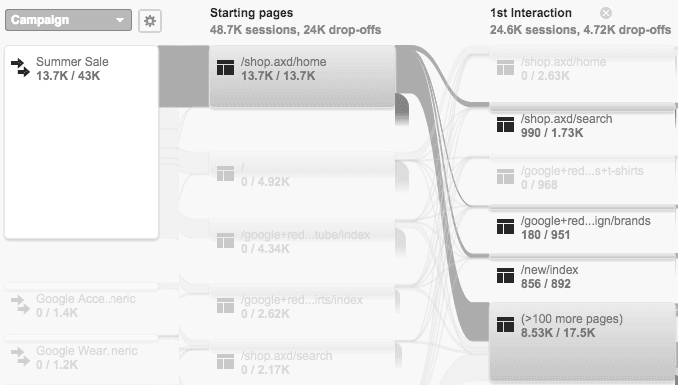
With these flows, you can get an inside look into the routes your traffic is taking once they get to your site. This data is very valuable as it allows you to create more defined remarketing segments and refine your messaging – making your campaign more personalized. In a nutshell, the smaller (more segmented) your audience is, the higher your chances of conversion at a lower cost.
Google Ad Targeting Hack 2: Mix Remarketing and In-Marketing Segments (Intermediate)
Once you have mastered the basic Google targeting hack above, it’s time to roll up your sleeves and take your retargeting ads to the next level. An in-market audience is described by Google as,
“A way to connect with consumers who are actively researching or comparing products and services across Google Display Network publisher and partner sites and YouTube.”
How Google determines their in-market audiences is by assessing clicks to related ads and conversions from those clicks, which sites they visit and how often, and the content of the pages or sites they visit.
Using in-market audiences with remarketing isn’t as complicated as you may think; you can select a list of in-market audience categories for any Search ad campaign:
Targeting > Interests and Remarketing > In-market Audiences.
Why is this so handy? By layering in-market audiences with your highly segmented remarketing campaigns, you are essentially narrowing them down even further to target only those people in your remarketing lists who are very actively interested in what you are selling. All while retaining relevancy – which keeps your CPCs down – and improving conversions.
Google Ad Targeting Hack 3: Building Your Own Custom Affinity Audience
Have you experimented with Google’s custom affinity audiences yet? Using custom affinity audiences, similar to intent, enables you to create an audience that targets potential shoppers by the types of products they are interested in and the types of media they are consuming.
Newbie Tip: You can create this audience by going to your audience lists, clicking ‘Custom’ and navigating to ‘Interests & Remarketing.’ From there, you can select ‘Custom Affinity Audiences’ and then ‘Create new.’
This will give you a lot more targeting control over your Google Display Ads and is excellent for building your online brand.
Google Ad Targeting Hack 4: Upgrade Your RLSAs (Expert)
The next Google Ads targeting tip we recommend for keeping CPCs low and chances of conversions high, involves tailoring your bids and targeting to traffic behavior. Think of it this way: it’s segmenting down your audiences further, beyond that we’ve already shown you above. Your goal is to have more campaigns to smaller segmented audiences, than fewer campaigns to bigger audiences. RLSAs play a big role in achieving this. Here are two examples:
Example 1:
Let’s say you are now running Google remarketing campaigns based on specific traffic flow (hack 1) and their intent (hack 2). You could then create a new remarketing list that includes conversions from that specific campaign. But if you really want to segment your target, you may then split those conversions based on what they bought or how much they spent, i.e. average order value.
Example 2:
Another way you could get creative with your RLSAs is to set up a campaign that bids on a competitor’s term that is served to a remarketing audience. This means you are targeting previous traffic that is currently searching for products very similar to yours only. You can take that further by creating an RLSA list that only includes conversions, thus ensuring you have an increased likelihood of conversions while making sure you are spending on profitable customers.
Getting creative with your RLSAs is what separates the newbies from the experts, and can have a considerable positive effect on your bottom line. However, like with any Google element, it’s going to take tweaking and testing. Head over to our 11 RLSA Strategies guide for more inspiration.
Google Ad Targeting Hack 5: Mix RLSAs With Social Audiences (Expert)
As any successful eCommerce store owner will tell you, if you want awesome eCommerce traffic, you need a cross-channel strategy. It is not enough to have Google or Facebook campaigns, and it’s still not enough to have campaigns on both platforms without an integration strategy. You need a cohesive cross-channel marketing strategy. This is where combining RLSAs and Facebook comes in. The benefits are huge:
- Being able to target similar shoppers on Facebook from successful Google campaigns
- Integrating ad elements, like headlines, on various channels
- Boosting Google conversions with Facebook and vice versa

- Taking your Google campaign to new heights with remarketing
Let’s look at the last benefit in more detail and see why it makes our top Google Ads targeting hacks list.
Let’s assume you are running a successful Facebook campaign that’s using lookalike audiences to attract new potential shoppers. By creating an RLSA that targets traffic generated from that campaign with specific keyword strategies, you then have a bigger chance of converting those shoppers. Why? Because you are able to target potential shoppers who are actively looking for what you are selling and already familiar with your brand.
Here’s a step-by-step guide on creating your first cross-channel campaign:
Step 1: Create a Facebook awareness campaign aimed at attracting new potential shoppers. Make sure you remember to add exclusions so that you prevent previous site visitors or customers from being included.
Step 2: Use UTM tags so that the clicks from this campaign audience will then be added to your analytics.
Step 3: Create an RLSA list based on the audience list from the Facebook campaign results in your analytics, and create a new Google remarketing campaign from this list. You want to make sure that it includes your top funnel keywords at a campaign level.
Step 4: Use ad groups to experiment with bids and create more specific ads based on traffic generated by this Google remarketing campaign.
For a full cross-channel strategy that combines the power of Facebook with Google, check out our full Cross-Channel Strategy Guide.
Google Ad Targeting Hack 6: Up Your Long-Tail Keyword Game (Basic)
When it comes to basic and expert targeting tips for Google ads, no list would be complete without mentioning keywords. Why? Because, as we know, keywords are an essential part of your Google targeting strategy. Using only general keywords with high competition doesn’t just mean you could be stuck with very costly clicks; it may also mean less-targeted traffic, which in turn means less conversion potential. This is where your long-tail keywords come in.
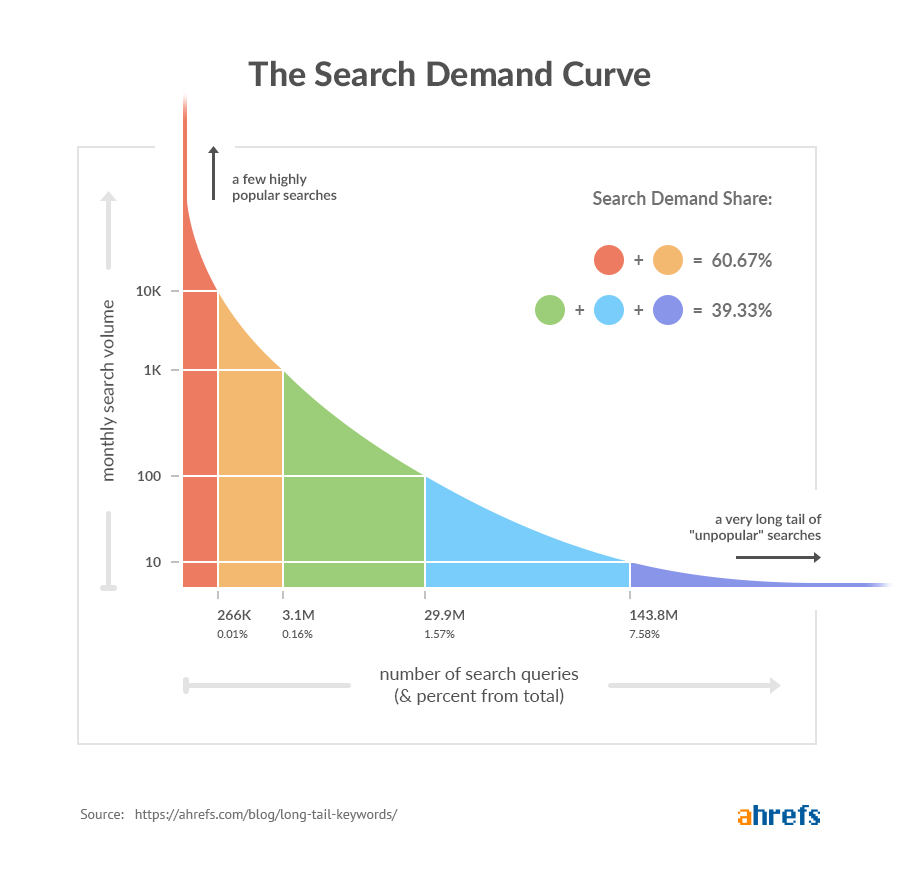
Let’s say you have an online apparel brand that sells leggings. Bidding on the keyword ‘leggings,’ for example, could be very costly and bring lots of traffic that may be looking for a type of legging you are not selling. AKA untargeted traffic. Instead, you could use ‘where to buy the best yoga pants,’ for example. Yes, long-tail keywords have lower search volumes, but they also have less competition, are cheaper and allow you to target shoppers searching for very specific things, therefore creating a more personalized ad.
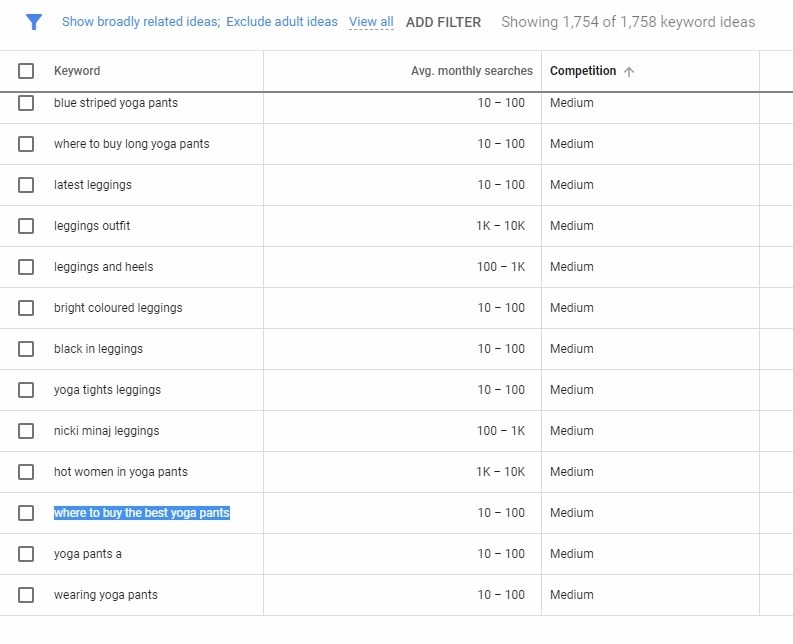
By expanding this term to be more specific, you will face less competition (CPCs) and more chances of conversions.
This strategy isn’t exclusive for Google Ads; it should also be part of your eCommerce SEO strategy. Here’s a guide from keyword research experts Ahrefs.
—
And that’s it; six Google Ads targeting tips and hacks to boost conversions. Like with any Google Ads tips, we always highly recommended that you test and tweak new targeting for your specific niche, audience and brand to find the winning formula for you. Don’t be afraid to get creative!
Have Google targeting questions? Post them in the comments below; our Google Ads experts are standing by!
Business & Finance Articles on Business 2 Community
(51)



